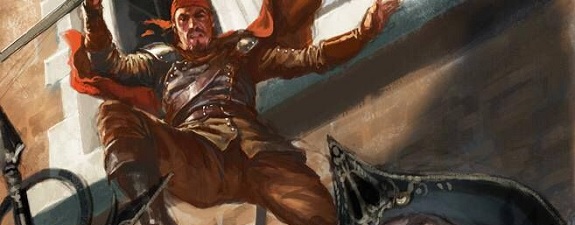
After attending the workshop on the Enhanced LCCAP (Local Climate Change Action Plan) conducted by DILG about three weeks ago, I have learned about the steps in the development of the plan starting from the current situation analysis. One part during the workshop that I would like to share is the Steps 5 to 7 where it involves project identification, prioritization, and implementation. Under this is the list of questions that act as identifying options. One of them is “What other adaptation options (PAPs) should be taken given the technical findings of the assessment?” I think this can be applied in the Magic: the Gathering gameplay which is my topic for today’s blog post.
Here below are the categories in the identification of the types of actions that can be taken.
1. Temporary
2. Managerial
3. Technical
4. Strategic
In the setting of Magic, these adaptation actions can be in the form of a sideboard card or a whole deck built specifically to counter the intended archetype. It can be short term or long term depending on the deck’s popularity in the metagame. An example is the Red Green Artifact destruction deck that was built against Artifact Affinity way back in Mirrodin Standard. We will detail each category starting with the first one, Temporary action.
The term temporary in its context is only for a limited period and not permanent. We might have cards in our deck that can temporarily answer a specific threat. That is a 1:1 card answer. In the current Standard, we have cards that deal with creatures or planeswalkers of a specific color. For instance, Noxious Grasp is an Instant that destroys the Green or White creature or planeswalker. It is an immediate answer, though only for a single card. You might want to add more copies of the card so as it can be drawn later on. Old school card examples are Gainsay, Red Elemental Blast, and Cryoclasm.

Next up is Managerial. That is how you would manage when you encounter a certain scenario or board position. I think my definite example here is in the Throne of Eldraine booster draft. There is one archetype that focuses on milling out opponents. They will mostly pick the cards that have mill effects and set up the deck on the base color of Blue.
If this is the known draft archetype, you would likely adapt by your deck build to be more than 40 cards. You can do it during sideboarded games but the deck should be already adjusted pre-sideboard. Another example is having more lands in the deck if there is a land destruction deck archetype in the meta.
The third category is Technical, means relating to a particular subject, art, or craft, or its techniques. In this approach, the deck adjustment is made specifically to counter an archetype. One example is the Esper Control adjusting its card components to contain life gain effects (i.e. Absorb, Elite Guardmange, Oath of Kaya) to combat aggressive Mono-Red or related Aggro decks. In the typical Standard scenario, they lean more on basically two categories of deck archetypes: Aggro and Control. They can be anti-aggro in the main deck and sideboard against control in games 2 and 3.
Lastly, Strategic is likely similar to the Technical approach but this time it is card specific. The best example here is the recent results of the Standard MCQ in Arena. People are playing maindeck Noxious Grasp to combat the Oko planeswalker and these Oko decks also maindeck Veil of Summer to counter them. What is worse here is that almost half of the metagame in that event is a variation of the Oko Food archetype, may it be SImic, Bant or Sultai. This category can be a result of an unhealthy format. For other format examples, we have Dredge in Modern wherein it was intensified by the printing of Hoogak from Modern Horizons. The deck was fast and consistent in getting the right pieces. That led people to maindeck Leyline of the Void to stop the graveyard shenanigans and eventually Wizards had to ban the card along with Bridge from Below.
To summarize, you can add a set of check questions before determining what kind of adaptive action to implement mainly in your sideboard plan. Of course, you can opt to a multi-category or balanced between the two depending on your preference and game style.
